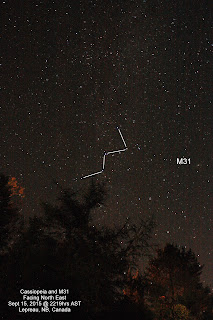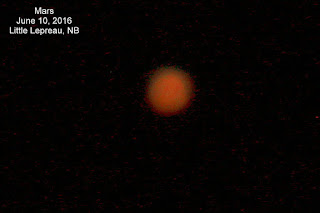JUNO MISSION
Juno
launched from Cape Canaveral Air Force Station on Aug. 5, 2011. Its set to enter Jupiter's orbit in less than two weeks on July 4th, 2016!
While
ten other spacecraft have flown in Jupiter's neighborhood in decades
past, part of what makes Juno stand apart is its ability to generate
solar power from Jupiter's neighborhood. - See more at:
http://www.space.com/32742-juno-spacecraft.html#sthash.sS1NgqoE.dpuf
Mission
Time line
Launch: 5
August 2011
Deep
Space Maneuvers: - August/September 2012
Earth
flyby gravity assist: - October 2013
Jupiter
arrival: 4 July 2016
Spacecraft
will orbit Jupiter for 20 months (37 orbits)
End
of mission (deorbit into Jupiter): February 2018
Long-term
stay at Jupiter
On
December 7, 1995, the Galileo probe parachuted into Jupiter and
descended nearly 160 km to pressures exceeding 23 Earth atmospheres.
They expected to find water clouds and did not. This was a
surprise to our scientists. They think that maybe the probe passed
through a dry area, where other areas may have water clouds. Juno
is fitted with a microwave instrument that is meant to detect water
clouds. Knowing the amount of water in Jupiter’s clouds can help
scientists better understand the make-up of Jupiter. This is
important, because of the abundant number of Jupiter sized
exo-planets...understanding Jupiter's makeup allows us to better
understand planet formation in general.
Juno
will be the 10th
spacecraft to study Jupiter at close range. Even during the brief
flybys, they have been able to glimpse interesting information about
Jupiter and its moons. For example, New Horizons caught a large
outburst on the volcanic moon Io.
This
will be the first spacecraft sent to the outer solar system that
generates its power from solar panels. All other spacecraft have
used the radioactive decay of plutonium.
- To
date, however, only one mission stayed for the long term: Galileo.
After being launched from space shuttle Atlantis in October 1989,
Galileo arrived at Jupiter in 1995 and spent eight years studying
the planet and its moons.
Galileo's
discoveries include finding potential salt-water oceans under the
crusts of Europa, Callisto and Ganymede. It also sent a descent
probe into Jupiter's atmosphere. Much of the mission's value also
came from spending nearly a decade in Jupiter's system, allowing
scientists the rare chance to do up-close, lengthy observations of
the largest planet in the solar system.
Images from Galileo Mission:







Juno
aims to go further. It will focus solely on Jupiter and try to answer
at least some of the following questions, according
to NASA:
The
Juno Spacecraft will orbit around the poles in order to study is
massive magnetosphere which stretches 7 million kms towards the Sun
and out past Saturn's orbit on the farside!
The
polar orbit will also give mankind its first look straight down at
the poles of Jupiter!
Juno's
scientists and engineers loaded the spacecraft with instruments that
can measure charged particles, magnetic fields and electric waves as
it flies for the first time through the magnetic field lines where
we think the auroral particles are generated.'
How much water does Jupiter
have in its atmosphere? This is important to figure out if our
formation theories of the solar system are correct, or if they need
some work.
What is Jupiter's atmosphere
like? Specifically, what are the properties at every layer such as
gas composition, temperature and cloud motions? Figuring out the
weather on Jupiter will help us learn more about gas giant weather
generally. (It's important for planets in our solar system, as well
as exoplanets.)
What are the magnetic and
gravity fields of Jupiter? This will give scientists some hints of
what the interior structure of Jupiter looks like.
How does the magnetic
environment of Jupiter affect its atmosphere? Part of that study
will come through looking at auroras.
Planetary researcher Fran
Bagenal worries that the magnetic field lines, which generate
millions of amps of electrical current around the poles of Jupiter
will pose a danger to Juno.
Juno is the fastest man made
object ever, having reached 160,000mph or 44 miles/second as it
approached Jupiter.

The
Juno spacecraft will, for the first time, see below Jupiter's dense
cover of clouds. This is why the mission was named after the Roman
goddess, who was Jupiter's wife, and who could also see through
clouds.
Major
questions that remain today about Jupiter:
How
did Jupiter form?
How
much water or oxygen is in Jupiter?
What
is the structure inside Jupiter?
Does
Jupiter rotate as a solid body, or is the rotating interior made up
of concentric cylinders?
Is
there a solid core, and if so, how large is it?
How
is its vast magnetic field generated?
How
are atmospheric features related to the movement of the deep
interior?
What
are the physical processes that power the auroras?
What
do the poles look like?
Spacecraft
Juno
uses a spinning, solar-powered spacecraft in a highly elliptical
polar orbit that avoids most of Jupiter's high-radiation regions.
The designs of the individual instruments are straightforward and the
mission did not require the development of any new technologies.
The
Juno spacecraft will, for the first time, see below Jupiter's dense
cover of clouds. This is why the mission was named after the
Roman goddess, who was Jupiter's wife, and who could also see through
clouds.
Why
A Rotating Spacecraft?
For Juno, like NASA's earlier
Pioneer spacecraft, spinning makes the spacecraft's pointing
extremely stable and easy to control. Just after launch, and
before its solar arrays are deployed, Juno will be spun-up by rocket
motors on its still-attached second-stage rocket booster. Juno's
planned spin rate varies during the mission: 1 RPM for cruise, 2 RPM
for science operations and 5 RPM for main engine maneuvers.
Structure
The
spacecraft's main body measures 11.5 feet (3.5 meters) tall and 11.5
feet (3.5 meters) in diameter.
Propulsion
System
For weight savings and redundancy, Juno uses a
dual mode propulsion subsystem, with a bi-propellant main engine and
mono-propellant reaction control system thrusters.
The
Leros-1b main engine is a 645-Newton bi-propellant thruster using
hydrazine-nitrogen tetroxide. Its engine bell is enclosed in a
micrometeoroid shield that opens for engine burns. The engine is
fixed to the spacecraft body firing aft and is used for major
maneuvers and flushing burns.
The
12 reaction control system thrusters are mounted on four rocket
engine modules. They allow translation and rotation about three axes.
They are also used for most trajectory correction maneuvers.
Power
Power
generation is provided by three solar arrays consisting of 11 solar
panels and one MAG boom. Two 55 amp-hour lithium-ion batteries
provide power when Juno is off-sun or in eclipse, and are tolerant of
the Jupiter radiation environment. The power modes during science
orbits are sized for either data collection during an orbit
emphasizing microwave radiometry or gravity science.
Science
Instruments
The Juno spacecraft carries a payload of 29
sensors, which feed data to nine onboard instruments. Eight of these
instruments (MAG, MWR, Gravity Science, Waves, JEDI, JADE, UVS,
JIRAM) are considered the science payload. One instrument, JunoCam,
is aboard to generate images for education and public outreach.
JunoCam
will capture color pictures of Jupiter's cloud tops in visible light.
JunoCam
will provide a wide-angle view of Jupiter's atmosphere and poles.
JunoCam is designed as an outreach full-color camera to engage the
public. The public will be involved in developing the images from raw
data and even helping to design which areas of Jupiter should be
imaged.
The
JunoCam camera head has a lens with a 58-degree cross-scan field of
view. It acquires images by sweeping out that field while the
spacecraft spins to cover an along-scan field of view of 360 degrees.
Lines containing dark sky are subsequently compressed to an
insignificant data volume. It takes images mainly when Juno is very
close to Jupiter, with a maximum resolution of up to 1 to 2 miles (2
to 3 kilometers) per pixel. The wide-angle camera will provide new
views of Jupiter's atmosphere.
JunoCam's
hardware is based on a descent camera that was developed for NASA's
Mars Science Laboratory rover. Some of its software was originally
developed for NASA's Mars Odyssey and Mars Reconnaissance Orbiter
spacecraft. JunoCam is provided by Malin Space Science Systems, San
Diego, Calif.
Science
Overview
With
its suite of science instruments, Juno will investigate the existence
of a possible solid planetary core, map Jupiter's intense magnetic
field, measure the amount of water and ammonia in the deep
atmosphere, and observe the planet's auroras.
Atmosphere
How
deep Jupiter's colorful zones, belts and other features penetrate is
one of the most outstanding fundamental questions about the giant
planet. Juno will determine the global structure and motions of the
planet's atmosphere below the cloud tops for the first time, mapping
variations in the atmosphere's composition, temperature, clouds and
patterns of movement down to unprecedented depths.
Magnetosphere
Deep
in Jupiter's atmosphere, under great pressure, hydrogen gas is
squeezed into a fluid known as metallic hydrogen. At these enormous
pressures, the hydrogen acts like an electrically conducting metal,
which is believed to be the source of the planet's intense magnetic
field. This powerful magnetic environment creates the brightest
auroras in our solar system, as charged particles precipitate down
into the planet's atmosphere.
Juno
will directly sample the charged particles and magnetic fields near
Jupiter's poles for the first time, while simultaneously observing
the auroras in ultraviolet light produced by the extraordinary
amounts of energy crashing into the polar regions. These
investigations will greatly improve our understanding of this
remarkable phenomenon, and also of similar magnetic objects, like
young stars with their own planetary systems.
Juno
provides the first survey and exploration of the three-dimensional
structure of Jupiter's polar magnetosphere.
SOURCES
Galileo Images from this
site
From July 2016 issue of
Sky & Telescope article by Fran Bagenal, 'Revealing Jupiter's
Inner Secrets'


































